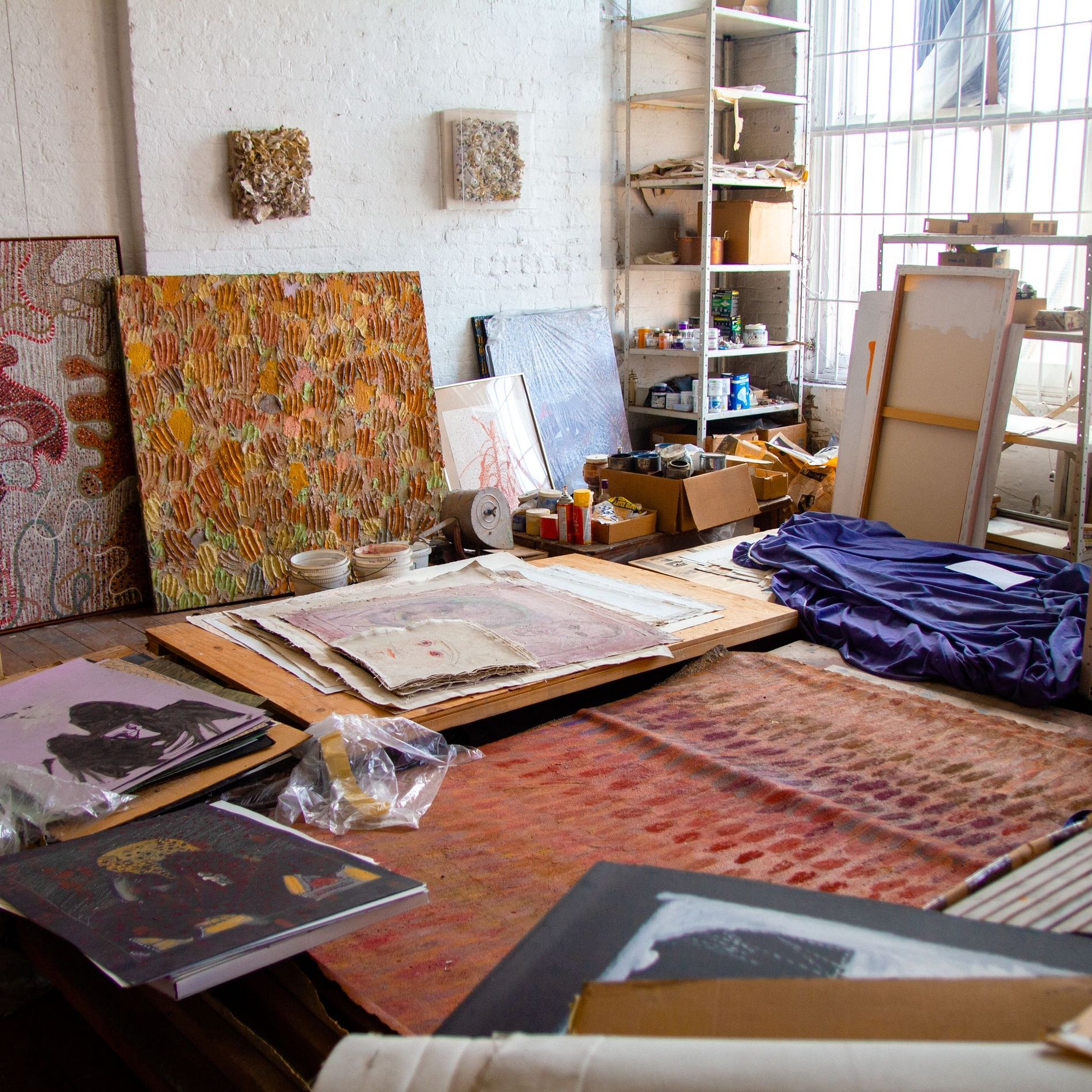Iria Leino, the forgotten art and fashion force, is wrapped in a mystique as thick as the mists covering the lakes of her Finnish childhood home. A pioneer of the '60s abstract art scene of New York, Leino left a massive body of works behind that have only recently been discovered. Two years after her passing, the late artist emerges from the shadows with a major gallery show in Chelsea that has the art world mesmerised
Visiting Iria Leino’s Soho loft is a bewildering experience. Every nook and cranny hold art. Canvases in various sizes lean sideways on floors and wall racks, creating passages and walkways across the 4,000 square foot loft, that Leino called home for well over six decades. Only a handful of abstract paintings in exquisite colour palettes (the artist’s favourites, one would assume) hang on display, the rest nestled together in tidy rows.
When the reclusive painter passed away from leukemia at age 89, she left more than a thousand works within these walls. Despite being immensely productive throughout her incognito career, Leino’s body of work has almost exclusively been for her eyes only. She is described as having been stingy with curators who showed interest in her work and she would never push for sales or gallery shows.
Art was her both her life and her lifeline, it replaced the family that she had lost at an early age and it was the husband that she vehemently chose not to have. The stunning former top model turned artist did have lovers, though, but held them all at an arms distance in order to not let romance interfere in her life’s true mission: creating art. All of the above have become known after Leino’s passing, mostly through her own journals that were found in the loft. It is these writings that will serve as the narration for a new documentary about her artistry and life, with Finnish actor Laura Birn in the lead role, directed by Janna Kyllästinen and produced by Kati Aho.

Photo: Helmi Korhonen

Photo: Helmi Korhonen

Photo: Helmi Korhonen
"Almost everyone I’ve shown Leino’s work have basically loved it, no kidding," says Kati Laakso, Executive Director of the Finnish Cultural Institute in New York. "I think her style evokes a lot of emotions, especially if you’ve been lucky enough to see the art in her loft in SoHo, which carries a very strong emotional spirit of her person. I've heard a lot of artists being referenced but kind of want to keep her in her own world," Laakso adds.
Leino was born in Helsinki, Finland in 1932 and her childhood was lined with loss and tragedy. She not only experienced the war but also lost her mother at the age of six, leaving her to be raised by a family friend, ‘Aunt Venny’. The creative child laid her path into a lifetime of artistry by attending Helsinki’s Academy of Fine Arts in 1951, earning a degree in fashion design in 1955 under the guidance of none other than the legendary designer and sculptor Tapio Wirkkala. Post graduation, Leino headed to Paris and the École des Beaux-Arts and worked as a fashion correspondence for Finnish newspapers alongside her art studies, before the stunning young artist was scouted into the world of modelling by Karl Lagerfeld, who at the time worked as an apprentice to Pierre Balmain. Leino's high cheekbones and featherweight build was all the rage during the '60s Twiggy-era, and the artist-turned-model worked for Christian Dior, Pierre Cardin and Jacques Heim, appeared in Vogue and Harper's Bazaar and walked the runways of Europe.

Leino with pastel works from her “Buddhist Rain” series, 1972 . Photo: Courtesy of the Archives of the Iria Leino Trust
Her modelling career was prolific and enabled the starving artist to purchase an apartment in Paris, but it also made her starve her in the literal sense – Leino ended up suffering from anorexia. She decided to leave Paris for New York, and moved into her Soho loft on Greene Street in 1966, leading a quiet and solitary life dedicated to her art. Leino managed her anxiety and anorexia by converting to Buddhism and by practicing yoga and meditation.

Photo: Helmi Korhonen
Another coping mechanism was her artwork. She painted thousands of works, some of which are now on display at renowned Harper’s Gallery in Chelsea. The gallery show consists of canvases from Leino’s 'Color Field' and 'Buddhist Rain' series, painted in late 1960s and early ’70s. There is also a biography in the works about the life and art of Leino, penned by Peter Hastings Falk, an art historian who has cataloged Leino’s works, letters and journals in the late artist’s loft.

Kati Laakso, Executive Director of the Finnish Cultural Institute in New York with Art Historian Peter Hastings Falk.
Kati Laakso, who is musing over the fact that Leino’s art has been so well received in New York City and beyond, hopes that the discovery will grow the interest in Finnish art in general "I’m hoping that that New Yorkers get curious about Finnish art and artists and start looking into it, researching, and finding new favorites among the fabulous contemporary artists in Finland," she says.
Laakso’s other hope is, that other Finnish artists will follow in the footsteps of Leino: "I’m hoping that more Finnish artists would be encouraged to start moving abroad, trying to build careers in cities like New York. It’s an insanely tough city for artists to live in and takes a lot of strength and courage. But it is worth it. In New York you never know what might happen!"
